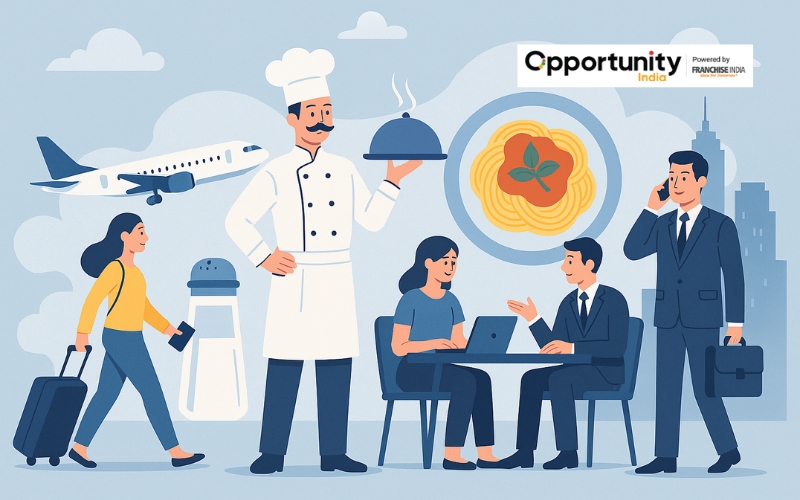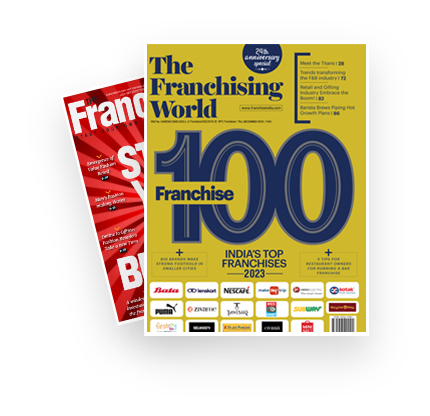
Imagine providing warm food to people who love traveling. Enter the travel food business that aims to make eating healthy and easy while traveling. Have you ever been on a lengthy train trip and yearned for a satisfying dinner that isn't expensive junk food? Or perhaps you've been hungry while traveling by car and haven't seen any decent places to eat. You're not alone if you've been there, which is precisely why starting a travel food business is such an intriguing and promising idea.
What Exactly Is a Travel Food Business Service?
Serving food to people in transit, whether they are traveling by rail, air, or highway, is the fundamental function of a travel food business. Here, you go to them (or rather, their place) as opposed to dining at restaurants or cafes.
Combining food and travel into a business is an intriguing and lucrative concept. Delicious meals are delivered to individuals on the go by a travel food business service, whether they are tourists visiting far-flung locations or travelers at airports, train stations, or highway rest stops. This kind of business can reach a sizable market that is eager for convenient, high-quality, and hygienic meals if done correctly.
Also Read: Daycare Business Plan: Key Steps
The goal of a travel food business service is to give passengers wholesome, delicious, and fresh food while they are in transit. In contrast to traditional dining establishments, this business serves mobile customers and prioritizes prompt service, packaging, and delivery.

Understanding the Travel Food Business Model
It's crucial to comprehend the various ways you can function in this field prior to starting your travel food service. Depending on your budget, geography, and target market, you may look into a variety of lucrative forms rather than merely one "correct" one. To assist you in selecting the ideal model, let's analyze the most widely used travel food business models.
Railway Food Delivery Model
Given the enormous volume of rail passengers that pass through India every day, this is one of the most popular models there. According to this approach, passengers place their meal orders in advance via a website, mobile app, or phone call, and they are delivered when the train arrives at a certain station. Staff members deliver the meal directly to the passenger's seat or at the station platform, usually according to the train's schedule.
This model works well because of its scale and ease of use. You have two options: work alone or collaborate with IRCTC or outside apps like RailRestro or TravelKhana. Since passengers depend on you for their only satisfying meal during lengthy trips, timely delivery and clean packaging are essential to success in this situation.
Also Read: Top 10 Medical Business Ideas
Airport Meal Pickup or Delivery
It is common for passengers to search for quick, hygienic, and nourishing meals before boarding or after landing. Under this approach, travelers can pre-book meals or get a quick lunch on the run by setting up a tiny kiosk, counter, or delivery station within or close to airports.
This concept frequently calls for partnerships with approved food establishments or compliance with airport regulations due to security constraints at airports. The higher-paying customers and steady stream of passengers, particularly in metropolitan areas, can yield substantial profits even though the investment may be somewhat higher.
Highway Food Truck Model
The food truck business strategy is adaptable; you can switch places according to the seasons of tourists, traffic, and weather. The most well-liked dishes here include tea-coffee combos, sandwiches, noodles, biryani boxes, and local munchies. Maintaining food safety regulations is crucial, particularly during the summer or monsoon season when there is a significant chance of food spoiling.
Tourist Group Meal Services
Pre-packaged, dependable meals are always needed by tour operators and travel agencies for their clients, particularly on extended pilgrimages or sightseeing excursions. With this model, meals are prepared in bulk and delivered to hotels, bus stops, or tour guides directly at predetermined times.
Also Read: Cattle Farming Business Plan: Step-by-Step Guide
Investment Breakdown: Travel Food Business
Here’s a rough cost estimate to start a travel food business in India:
| Item | Estimated Cost (INR) |
|---|---|
| Kitchen Setup | ₹2,00,000 – ₹5,00,000 |
| Food Truck/Delivery Vehicle | ₹3,00,000 – ₹8,00,000 |
| Licenses & Legalities | ₹20,000 – ₹50,000 |
| Staff Salaries (Initial 3 months) | ₹1,50,000 – ₹3,00,000 |
| Packaging and Raw Material (Stock) | ₹50,000 – ₹1,00,000 |
| App/Website Development | ₹50,000 – ₹1,50,000 |
| Marketing and Branding | ₹50,000 – ₹1,00,000 |
| Total Investment | ₹8,00,000 – ₹20,00,000+ |
Steps to Starting a Travel Food Business
What do you know about the market?
Take a step back before you go into business mode. Consider the people you are serving.
- Are they looking for a trustworthy tiffin service since they commute to work?
- Are they travelers seeking hot food at particular stations?
- Do they need to pack lunches for travelers with busy sightseeing schedules?
Every group has distinct requirements. Thus, conduct some basic research:
- Spend some time at an airport or train station and watch
- Find out what people typically eat when they are on the road.
- Check out what rivals like RailRestro and TravelKhana have to offer.
This will assist you in developing your price, delivery strategy, and menu.

Pick Your Business Format
The exciting part is about to begin: deciding how you wish to help.
You can experiment with the following formats:
- Railway Food Delivery: Meals are delivered to a certain station after travelers place preorders via your app or website.
- Airport Meal Kiosks or Pickups: For travelers with brief layovers, these are ideal.
- Highway Food Trucks: Excellent for roadside travelers seeking quick, delectable snacks.
- Tour Group Catering: Meals that are packaged and given to clients by tour guides or agents.
- Subscription Meals: For workers on the go or daily bus or train commuters.
Make a Smart Menu Plan
The golden rule for traveling cuisine is to keep it easy, delicious, and convenient. Food that is easy to pack, won't go bad quickly, and retains its flavor for a few hours is what you want.
Here are a few favorites among travelers:
- Veg/Non-Veg Thalis
- Fried rice or biryani boxes
- Chapati Wraps or Rolls
- Idli packs and sandwiches
- Dry snacks such as biscuits, khakhras, theplas, or samosas
Set Up Your Kitchen or Sourcing Model
Here, you have two choices:
- Central Kitchen: This is your headquarters if you are in charge of cooking yourself. Invest in food-grade tools, cold storage, adequate ventilation, and hygienic equipment.
- Partnerships with Neighborhood Restaurants: Not prepared to work in a kitchen? Join forces with reputable eateries close to stations or transportation hubs. They do the cooking; you do the branding and delivery.
Get the Legal Stuff Done
This step is crucial to the safety and legality of the business you run.
What you'll need in India is as follows:
- FSSAI License: For adherence to food safety regulations
- GST Registration: For taxes and billing
- Trade License: Granted by the local government
- Fire Department NOC: If using gas burners
- Vehicle Permits: For food trucks or delivery vans
Obtain special permissions from the airport authorities or IRCTC if you intend to operate in certain areas. Avoiding penalties later is preferable to getting it right from the start.
Also Read: How to Start a Fruit Juice Business?
Master the Delivery Game
Time is everything in our business. You will never be able to win back a train passenger if your food is 20 minutes late. Thus, concentrate on:
- Real-time delivery tracking
- Prompt packaging and dispatch
- Staff training for smooth last-mile delivery
- Efficient routing for covering multiple stops
For easier delivery, some entrepreneurs even construct little fulfillment desks at bus stops or train stations.
Build a Simple App or Website
Convenience is what modern travelers want. If you make ordering simple, customers will return again and again.
Your website or app should allow visitors to:
- Look through menus by destination or route.
- Choose a delivery location, such as a train station.
- Schedule delivery
- Pay online
- Monitor orders in real time.
Remember that your consumer may be placing their order from a moving train or a rural highway with a weak network, so keep it quick and light!
Also Read: Sheep Farming Business Plan: Profit & Steps
Conclusion
If you have a flair for logistics, love to solve practical problems, and have a passion for eating, you must start a travel food business. This business is ideal for India's constantly shifting population, which includes families, professionals, tourists, pilgrims, and students. Begin modestly. Remain well-organized. Serve mouthwatering food promptly. And soon, hungry tourists from all around the nation might choose your brand.

